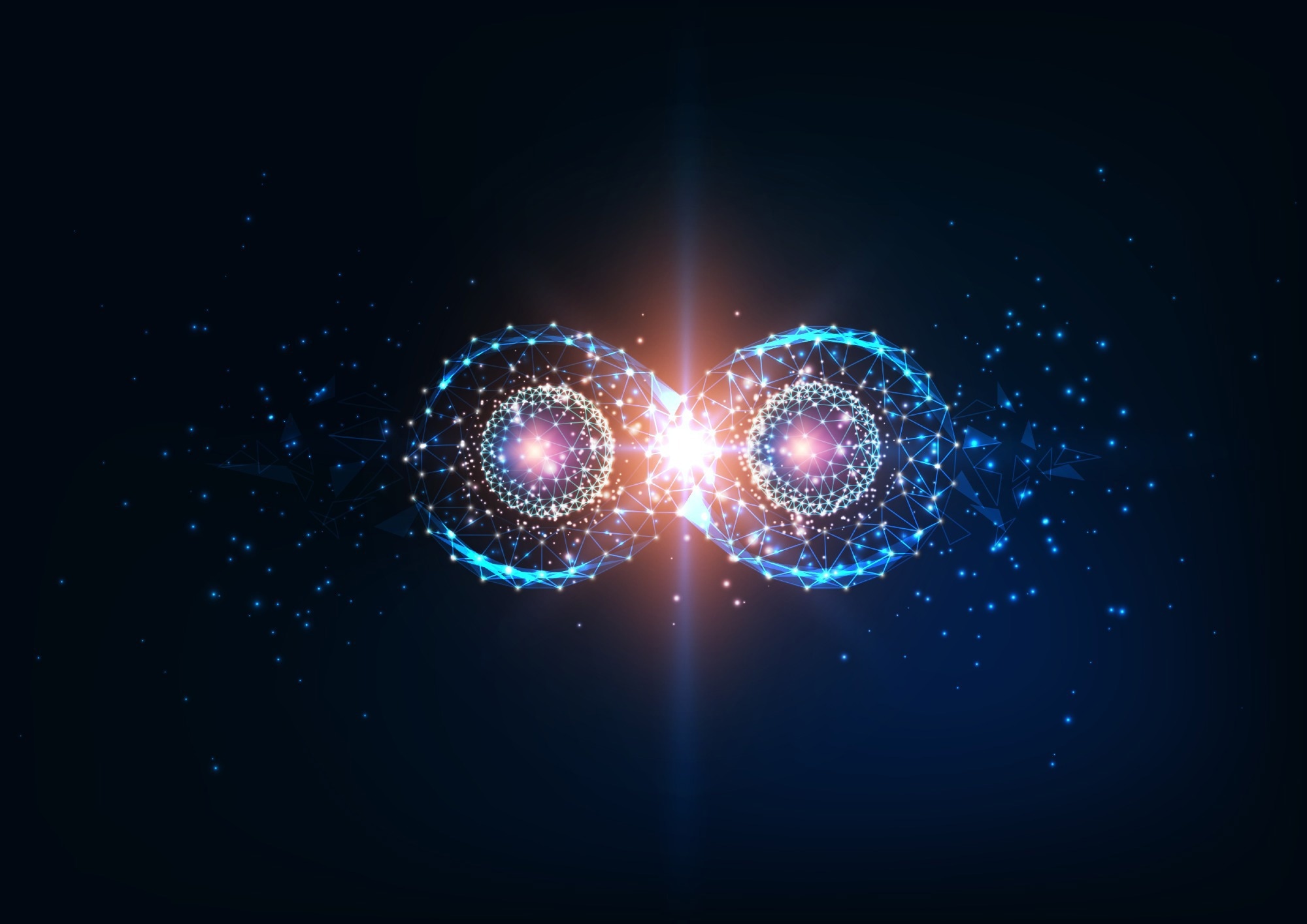New research points to a more robust quantum resonator that could have a wide range of applications including quantum computers, investigating gravity, and detecting tiny motions caused by dark matter.

Image Credit: Inkoly/Shutterstock.com
Quantum technology could potentially deliver a computing revolution in the near future, but currently, this technology suffers from a major stability problem that hinders its application. For quantum computers to become more robust, researchers must work on improving an element that underpins its foundational elements — coherence.
Researchers at the Niels Bohr Institute, University of Copenhagen, may have taken an important step in this direction by improving the coherence time of a mechanical resonator — in this case, a quantum membrane of silicon nitride.
The team’s research builds upon the field of cavity electromechanical, which consists of the coupling of a microwave and mechanical mode to manipulate a quantum state by creating a so-called quantum drum.
This was done by combining the 63-nanometer thick membrane — which is a still a large quantum system — with a superconducting microwave circuit which means it can be used in a variety of applications. This includes quantum computers and other devices that process quantum information.
The system could also be used to conduct investigations into fundamental physics, including testing the effects of gravity of quantum systems.
The team — whose research is published in the journal Nature Communications — achieved a coherence period of over 100 milliseconds and the membrane is capable of storing information as quantum states for it to be processed by a quantum computer or quantum network.
What is Quantum Coherence and Why Does it Matter?
Quantum coherence is vital to the concept of superposition and to phenomena seen at subatomic scales such as entanglement — the idea that two particles can be connected in such a way that a change in one causes an instantaneous change in the other, even if they are on opposite sides of the Universe.
The concept of superposition in quantum physics arises from the fact that quantum states of a system are described as wavefunctions. Because waves can overlap, that means that a quantum system can exist in many states at once — even if these states are contradictory.
An analogy of this is the famous Schrödinger’s cat thought experiment. A cat is placed in a sealed box with a diabolical device that will release a deadly poison if an atom also in the box decays — a completely random process.
It means that if we treat the box as a quantum system the cat is described by a wave function that says it is both dead and alive at the same time. This is a superposition and while the system exists in this state it is in coherence.
Qubits — the fundamental unit of quantum computers analogous to bits in computers — can exist in a superposition of states. So while a bit can be in a 0 or 1 state, a qubit can simultaneously be in a 0 and 1 state. That’s part of what gives a quantum computer its tremendous computing power.
However, there is a catch.
Decoherence: Opening the Box
Returning to Schrödinger’s cat, obviously it cannot exist in this seemingly paradoxical superposition of states forever. This arrangement collapses when the researcher behind the experiment opens the box.
The wavefunction of the system collapses and the experimenter discovers if the cat is dead or alive. This is called decoherence.
But, for real quantum systems, “opening the box” takes very little. For decoherence to occur all it takes is for the quantum system to interact with another quantum system, or a magnetic field, or even experience anything more than an ultracold temperature.
This means that quantum computers rely on unimaginably delicate and precariously balanced foundations. This technology has to be strictly protected against environmental conditions that threaten decoherence.
Even while these precautions, quantum computers struggle with long chains of computations because of this problem. That’s why making coherence more robust is so important.
A Cool Quantum Drum
To protect the quantum membrane against environmental conditions and temperature effects that can caused decoherence, the University of Copenhagen team cooled it by using a helium-based refrigerator.
This also allowed the team to place the membrane in a ground state — the lowest possible energy a quantum system can take— which corresponded to an effective temperature of -273.15⁰C. This is just a tiny fraction of a degree above absolute zero, the point at which all atomic movement would cease.
Using the attached microwave circuit, they were able to control the quantum state of the motion of the membrane and also allowed the scientists to take precise readings from this large quantum system.
The team found that the system could remain in coherence for around 140ms, still an incredibly brief period, but impressive considering other state-of-the-art electromechanical systems have coherence times of 1ms at the most.
The authors suggest a wide range of applications for their quantum drum including as quantum memory systems, or as a replacement for bulky microwave resonators.
The system could also be used to detect tiny motions created by the spin of fundamental particles or even dark matter — the mysterious substance that makes up over 80 percent of the Universe’s matter content and is invisible due to the fact it does not interact with matter or electromagnetic radiation.
Reference and Further Reading
Seis. Y., Capelle. T., Langman. E., Saarinen. S., Planz. E., Schliesser. A., [2022], Ground state cooling of an ultracoherent electromechanical system, Nature Communications, https://www.nature.com/articles/s41467-022-29115-9
Disclaimer: The views expressed here are those of the author expressed in their private capacity and do not necessarily represent the views of AZoM.com Limited T/A AZoNetwork the owner and operator of this website. This disclaimer forms part of the Terms and conditions of use of this website.